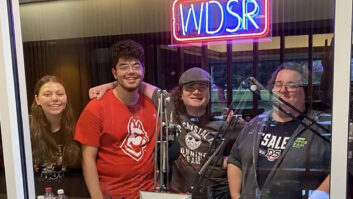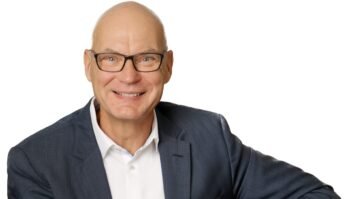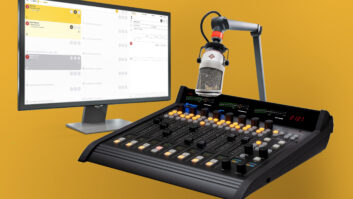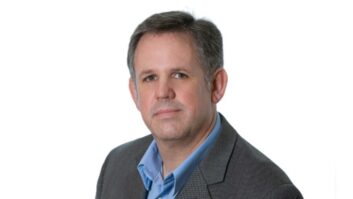Broadcast Electronics is approaching its 50th anniversary in 2009 and I was pleased to see BE plan a salute to Larry Cervon, its retired president, in October, with a ceremony in Quincy and a live Webcast.
Good for BE for honoring its history. We’ll have more about Cervon’s tenure in an upcoming issue.
BE is going through some less pleasant changes right now. Within a few weeks’ time the manufacturer of transmitters and digital audio and data products lost its global sales VP; it laid off some of its employees; and it announced the retirement of its CEO of eight years, John Pedlow — news that came, at least to me, suddenly.
Because these developments emerged in a flurry and because BE is one of the “bellwether” manufacturers in our industry — it calls itself the largest radio-only broadcast manufacturer — I asked Neil Glassman, vice president of strategic marketing, to talk about what they might mean.
“We did have a reduction in staff over the summer,” Neil confirmed. “But the company still has more employees today than a year ago. You hate to get rid of people; but this was more a correction of an ‘over ramp-up.’ Everything was being built up a little too fast. We’d been building in every department for growth and had to correct for a little too much enthusiasm.”
Glassman declined to say how many people had lost their jobs; he said the cuts came in several departments. He said BE still has more than 150 employees, that it continues to use the recent 20,000-square-foot expansion to its main facility in Quincy, Ill., and that delivery and customer service response times have not been affected by the cutbacks.
Separately, Michael Burgett recently resigned. BE had welcomed Burgett with fanfare in late summer of 2006 when it created the position of vice president of global sales; officials said then the hire was important because BE was expanding in new overseas markets and also integrating digital media with RF transmission activities, studio with over-the-Internet and HD Radio activities.
Glassman said Burgett left for personal reasons unrelated to other changes and said the sales position is now open. BE’s international sales efforts have strengthened, he said, including good growth in AudioVault sales outside of the United States.
Growth
The departure of Pedlow is unfortunate because he’s an executive I’ve always found to be affable and accessible; but it also seemed notable in part because it came right after the layoffs and because it felt sudden. Glassman said it had been in the works for a while behind the scenes.
“We collectively decided (John) could retire when he found his replacement … after almost nine years in which the company grew tremendously.” In announcing the change, BE called Pedlow’s tenure successful and noted that during those years, BE had “set a course for the future of terrestrial radio with ground-breaking HD Radio products,” achieved double-digit revenue growth for four consecutive years, increased manufacturing capacity and acquired The Radio Experience product line.
Pedlow will move back to his home state of Washington to pursue boating, among other interests, and will continue to consult to BE.
Meanwhile new CEO Joseph W. Roark is getting his sea legs. He’s former president of four Weir Group PLC companies and two Danaher companies; BE describes him as strong in industrial business experience with an emphasis on converging technologies. Roark — pronounce it “ROH-ark” — will relocate from Salt Lake City to Quincy. He and Pedlow issued mutually supportive statements in announcing the change.
‘Bit of a null’
Glassman said BE has been through many such departures over its 48 years.
“It’s really cool in a way that BE is both a personality-driven company, with people who are visible like John Pedlow, Jerry Westberg, Richard Hinkle, Tim Bealor and others, but that it is enough of a company that it transcends people’s life transitions. It has a personality and force of its own.”
But while not connecting business trends to Pedlow’s departure, Glassman didn’t pretend that BE’s equipment market has not softened.
“It’s probably no secret that the rate of HD Radio adoption has slowed in the United States. There are new opportunities that exist in other countries; Mexico and Brazil come to mind; sales there are few but promising. The whole industry is in a bit of a null in the HD transition but I don’t think anyone’s long-term plans have changed.”
I asked Neil if he remains optimistic about the longer-term uptake of digital radio here at home.
“Absolutely. We continue to see increasing dialogue with people in the middle markets; we’re getting more people who are beyond ‘Uh, I’m not interested’ to ‘Hmm, should I do this?’ and starting to go toward, ‘OK if I’m going to do this, when is the right time?’ We’re seeing more middle-market stations and/or mid-sized groups inquiring. Even if it’s just ‘I’m buying a new analog rig but want to be sure I’m not going to be painted in a corner.’”
Though BE is not relying only on business in the United States, he said, “right now, we’re still bullish on the U.S. market. I can’t speak for the owners; but the way they’re continuing to support us, it seems the owners are also bullish about the future of radio.” Since early 2006 BE has been owned by the Audax Group in Boston, a private equity firm that also owns the Boston Herald, among other holdings.
As you know from previous columns, BE is not the only company that has had to scale back its workforce in light of business trends in broadcasting. And CEOs do change from time to time. I wish BE and its new leader well and wish for it more growth ahead. A healthy broadcast equipment marketplace is good for equipment users and for trade publications, of course; but it’s also reflective of the underlying radio industry.
We’ll continue to watch and root for a vibrant manufacturing sector. Glassman, for one, is optimistic that smart broadcast owners will do what’s necessary to redefine what “radio” means. Our medium is now a multiplatform environment, he said; and Glassman is bolstered by seeing entities much bigger than BE, companies that own stations and produce programming, continuing to invest in it.












